Everyday Mathematics Grade K Answer Key Unit 2 Section 2
Everyday Mathematics Grade K Home Link 2.3 Answers
Triangles at Home
Family Note
We learned about triangles in school today. We learned that triangles can come in lots of different shapes and sizes, as long as they have three straight sides and three vertices (corners). As your child looks for triangles around the house, help him or her find varied examples of triangles in everyday objects and pictures. It is important that children be exposed to a wide variety of examples of each type of shape.
Question 1.
Tell someone at home what a triangle is.
- Look around your house for lots of different triangles. Draw some of them on the back of this page.
- You might also cut out triangles from magazines to make your own triangle collage.
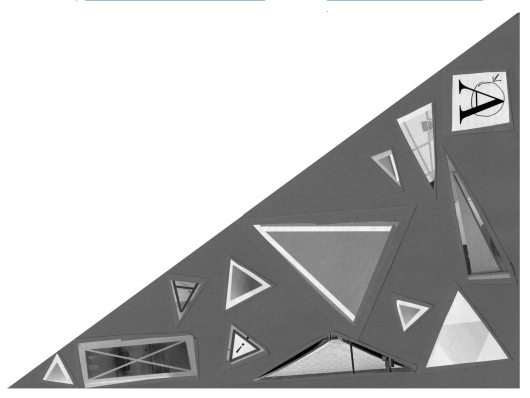
Answer:
A triangle is a closed, two-dimensional shape with three straight sides. A triangle is also a polygon .
The Different Shapes of Triangles that we found in our home are Pizza, Tree, Pyramid toy and Water Melon shown in the below Image .
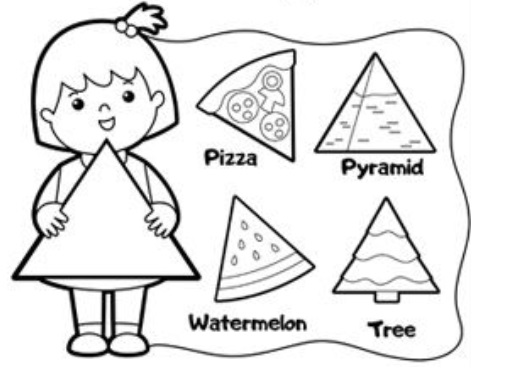

With Different objects in the shape of triangle took from magazine represented in a collage
Everyday Math Grade K Home Link 2.5 Answer Key
Pocket Problems
Family Note
In school we have begun to explore addition and subtraction using what we call “pocket problems.” You can use an envelope, a paper bag, or a cup as your “pocket.” Pocket problems allow children to use concrete objects to add and subtract. If your child has difficulty solving the problems mentally, encourage him or her to open the envelope or small paper bag and count the objects.
Question 1.
Use an envelope, a paper bag, or a cup as your “pocket.” Do pocket problems with a family member:
- Count aloud as you place a few beans, coins, buttons, or other small objects in your pocket.
- Add two more objects to your pocket.
- Ask your partner to say how many objects there are now without looking inside.
- Pour out the objects and count them to check.
Empty the pocket and repeat with a different number of objects. This time, instead of putting more objects into your pocket, take a few objects out. Ask your partner to say how many objects are still in your pocket.
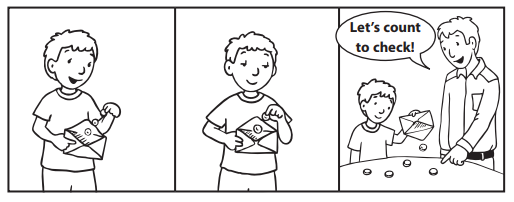
Answer:
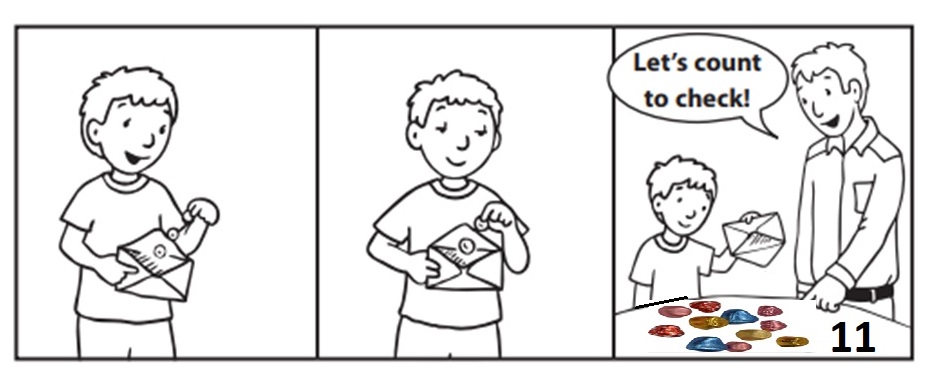
Here in the above Figure the kid keeps 6 heart shape chocolates and 5 u shape chocolates in the pocket .
The Kid later opens the Envelope with his father and counts the number of chocolates in the envelope .
Therefore, Total Number of Chocolates in the Envelope are 6 + 5 = 11 chocolates
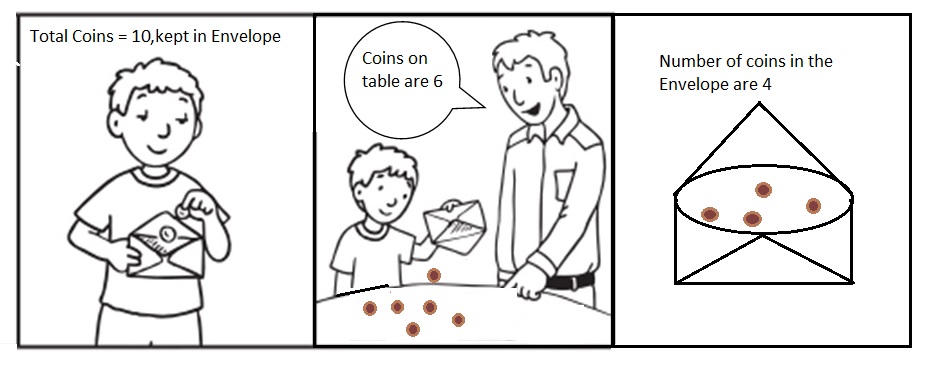
Kid and his Father kept 10 coins in the Envelope
Then Later kid removed 6 coins from the envelope and kept on table . He asked his what are the remaing number of coins in the Envelope .
Remaining number coins in the Envelope are 10 – 6 = 4 coins .
Everyday Mathematics Grade K Home Link 2.7 Answers
Sorting Groceries
Family Note
One lesson in each section of Kindergarten Everyday Mathematics will be an Open Response and Reengagement Lesson. These lessons provide children with opportunities to solve interesting problems using their own strategies and reasoning. On the first day, children solve an Open Response problem, which is a problem with more than one possible strategy or solution. On the second day, children discuss their work from the first day to reengage with the problem and to learn more about the mathematics involved.
These lessons provide opportunities for children to solve problems that are approachable, but require persistence. Children gain confidence by explaining their thinking and by listening to the explanations of others. They will also see that there is more than one way to solve a problem, which promotes flexible and creative thinking. Ask your child to talk to you about the problems and his or her mathematical thinking throughout the year. You will enjoy seeing your child become a confident problem solver.
In today’s lesson, children sorted collections of objects in different ways and explained their groups and sorting rules. Children can apply this type of thinking at home in many ways, including sorting groceries.
Question 1.
Before unpacking a grocery bag, try to guess how many items are inside it. Then count to see how close you were.
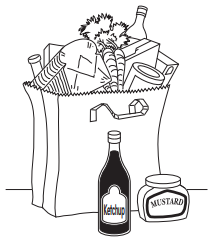
- Sort the groceries in the bag into groups. Explain why you put certain items together.
- Can you think of a different way to sort the items?
Answer:
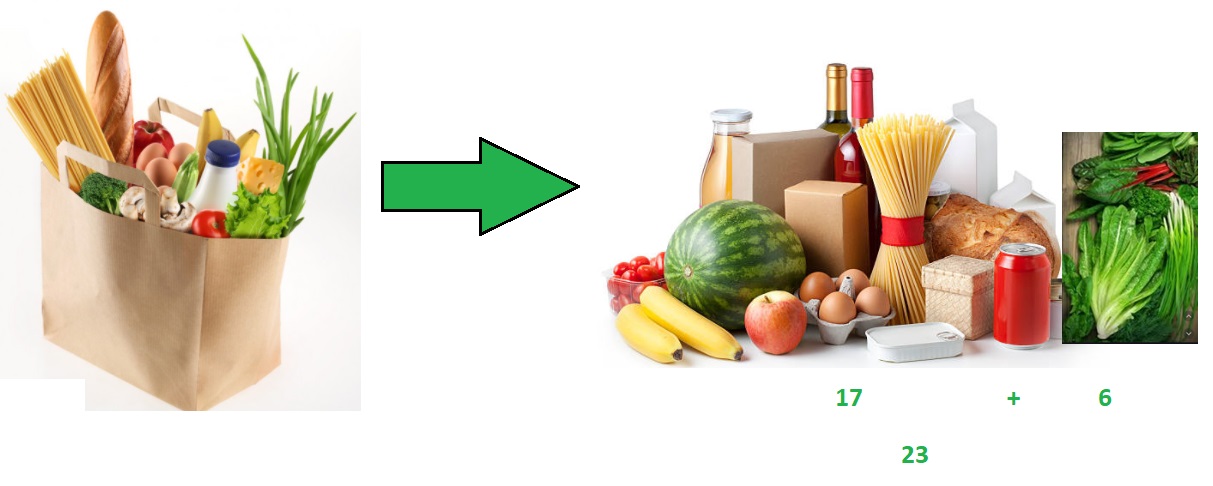
Explanation :
Number of Items in the Grocery bag is guessed as 20 .
The Items in the grocery bag are counted by unpacking and is displayed in the above image . Number of items are 23 .
Sorting of Groceries into different groups like putting leafy vegetable and vegetables as one group , fruits as another group , cool drinks and snack items as other group , milk, oil and other sauces as another group and eggs as other group .
In this we can make different groups to sort the grocery bags
Everyday Math Grade K Home Link 2.8 Answer Key
Circles at Home
Family Note
We learned about circles in school today. As your child looks for circles around the house, help him or her find different examples of circles in everyday objects and pictures. Also help your child notice the difference between true circles and other curved shapes such as ovals or beans.
Question 1.
Tell someone at home what a circle is.
- Look around your house for lots of different circles. Draw some of them on the back of this page.
- You might also cut out circles from magazines to make your own circle collage.
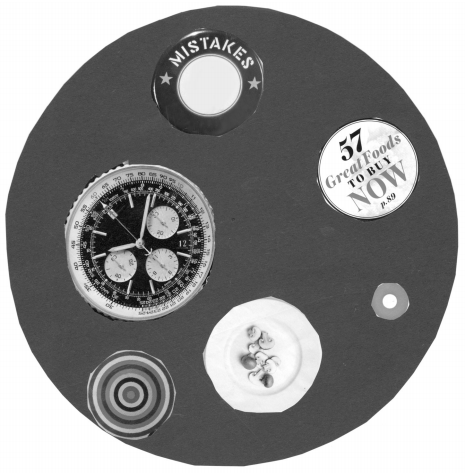
Answer :
A circle is a round shaped figure that has no corners or edges.
Different objects in the shape of circle are drawn in the below image , The objects in circle are yo-yo, Clock, Lollipop, Button and Stopwatch .

Collage of circle shape objects is made and shown in below image
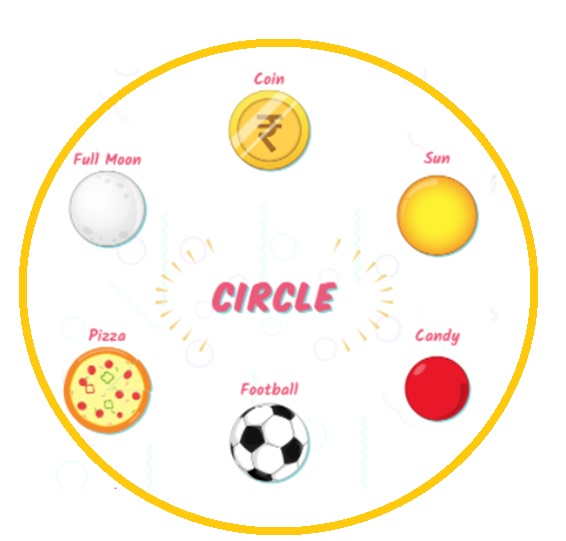
Everyday Mathematics Grade K Home Link 2.11 Answers
Rectangles at Home
Family Note
We learned about rectangles in school today, including why a square is a special kind of rectangle. (Both have 4 straight sides, with opposite sides the same length. Both also have 4 right angles— vertices that look like “Ls” or “square corners or angles.”) As your child looks for rectangles around the house, help him or her find varied examples of rectangles (including squares) in everyday objects and pictures. It is important that children be exposed to a wide variety of examples of each type of shape. Also help your child notice differences between rectangles and other four-sided shapes.
Question 1.
Tell someone at home what a rectangle is. Also explain why a square is a special kind of rectangle.
- Look around your house for lots of different rectangles. Draw some of them on the back of this page.
- You might also cut out rectangles from magazines to make your own rectangle collage.
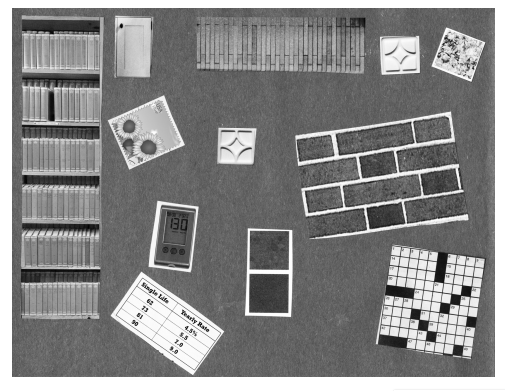
Answer :
A rectangle is a 2D shape in geometry having 4 sides and 4 corners. Its two sides meet at Right Angles. Thus, a rectangle has 4 angles, each measuring 90 ̊. The opposite sides of a rectangle have the same lengths and are parallel. Two sides are said to be parallel, when the distance between them remains the same at all points.
A square is a special kind of Rectangle :
a) Because all its angles are right angle and opposite sides are equal.
b) Because its opposite sides are equal and parallel.
c) Because its four sides are equal and diagonals are perpendicular to each other.
d) Because all of them have four sides.
e) Because its opposite sides are equal and parallel.
A sketch is drawn with different objects which are in Rectangle shape and is shown in below figure .
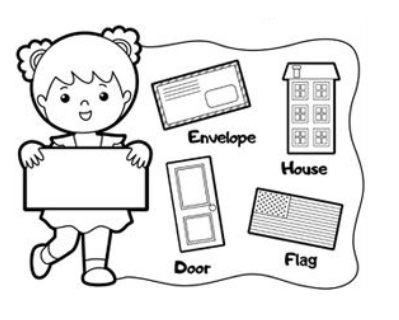
Objects images which are in Rectangle are shown in below figure .
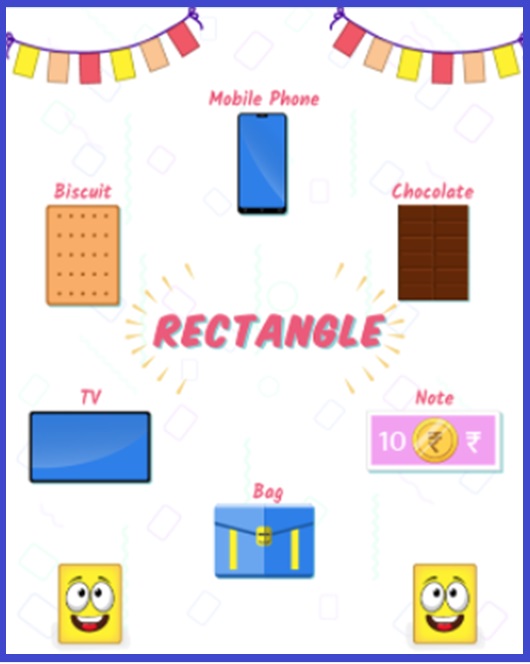
Everyday Math Grade K Home Link 2.13 Answer Key
Number Stories at Home
Family Note
We have been telling and solving number stories in school. Number stories help develop children’s problem-solving skills and provide a solid foundation for addition and subtraction. At this point in the year, share number stories with your child using informal language and everyday contexts. Focus on numbers within 5 (or within 10 if your child is proficient with smaller numbers). Do not worry about representing the stories with symbols or equations; we will focus on that skill later in the year.
Question 1.
Tell number stories for family members to solve. Ask them how they solved your number stories.
- Next have a family member tell a number story for you to solve.
- Show how you can use your fingers, counters, or pictures to model and solve the number story.
- Draw a picture of one of the number stories. Bring it to school to share with the class .

Answer :

Three number stories are written in above figure and shown with images .